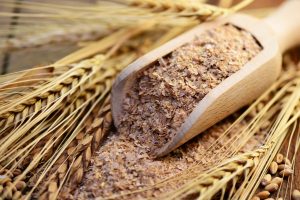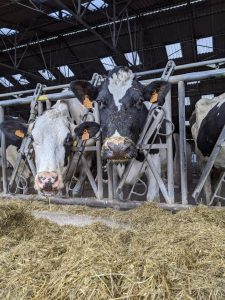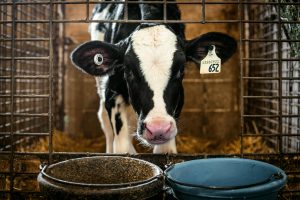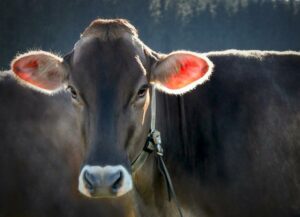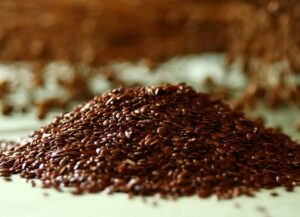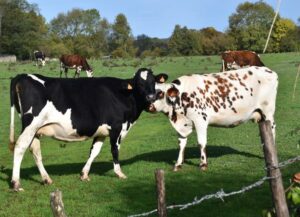Álvaro García
The success of a dairy operation relies on three critical factors: milk price, production costs, and milk volume. Profitability is defined as the difference between milk revenue and production expenses, multiplied by the total milk output. Producers must optimize these components to achieve sustainable success. At $20 per 100 lbs. (CWT), focusing on milk quality and feed efficiency can significantly improve returns. Producers must maximize productivity while maintaining cost-effective management.
Milk Prices and Strategies for Profitability
With $20 milk, improving milk quality can generate additional revenue:
- Reducing bacterial counts to 25,000 can add 10 cents per CWT.
- Lowering somatic cell count (SCC) from 400,000 to 150,000 can contribute another 30 cents per CWT.
These improvements combined add up to 40 cents per CWT. To capitalize further, producers can focus on increasing milk yield and reducing treatment costs.
“Opportunity milk” refers to unrealized production due to suboptimal management or health issues. For example, reducing SCC from 400,000 to 200,000 can result in approximately 2 lbs. of additional milk per cow daily. For a herd producing 90 lbs. of milk daily, this equates to an additional 40 cents per cow per day with $20 milk prices.
Feed Efficiency and Production
Feed costs typically represent 40–50% of total production expenses, making them a primary area of focus. Maximizing feed efficiency—defined as pounds of milk produced per pound of DM consumed—is essential. For cows consuming 57 lbs. of DM and producing 90 lbs. of milk daily, feed efficiency is:

This efficiency reflects good nutrient utilization and optimal forage quality. Maintaining digestible forages and balanced rations ensures high conversion rates and supports sustainable profitability.
Managing Production Costs
Reducing production costs is often necessary, but it must be done strategically to avoid unintended consequences that can impact productivity and profitability in both the short and long term. Feed quality, which is the largest expense of most dairies, should never be compromised. Essential nutrients, including energy, protein, minerals, and vitamins, play a key role in supporting milk production, reproductive performance, and cow health. Reducing critical feed components may not show immediate effects but can lead to lower milk yields, poor fertility, and weaker immune function, affecting future lactations and overall farm profitability.
In addition to feed, other key areas of cost management include bedding, veterinary care, and preventive health. While bedding expenses account for a small percentage of operating costs, they have a significant impact on cow comfort and productivity. Providing adequate bedding reduces lameness, improves lying time, and increases blood flow to the udder, which directly enhances milk production. Research shows that cows deprived of sufficient bedding spend more time standing, increasing the risk of hoof lesions and lameness. Lame cows not only produce less milk but also experience reduced feed intake, lower fertility, and higher culling rates. Investing in proper bedding, such as sand or sawdust, ensures cow comfort and prevents these costly issues.
Veterinary care and preventive health also play a crucial role in managing costs efficiently. Preventive measures like routine hoof trimming, vaccination programs, and mastitis management help avoid expensive treatments and production losses. For example, mastitis remains one of the costliest diseases in dairy production, with a single clinical case averaging $179 per cow. By implementing proactive health protocols, producers can reduce disease incidence, minimize treatment costs, and prevent disruptions to milk production.
Managing production costs effectively requires a balanced approach that prioritizes investments in areas essential to cow health and performance while eliminating inefficiencies. Feed optimization, improved bedding strategies, and preventive health measures are critical to sustaining productivity and profitability.
Maximizing Milk Volume
Profitability is driven by the total milk volume shipped from the farm, as it amplifies the returns generated per cow while optimizing the use of fixed costs. At a production level of 90 lbs. per cow daily, the operation not only achieves higher gross returns but also significantly improves efficiency, ensuring that each pound of feed consumed translates into greater milk output. This level of productivity allows producers to capitalize on the cow’s genetic potential and maximize revenue without additional resource investment, which is particularly important during periods of economic volatility.
The milk-to-feed price ratio remains a critical economic indicator for assessing profitability. At $20 milk, achieving a ratio of 3:1 – where one pound of milk pays for 3 pounds of feed – ensures that feed costs, which typically represent the largest portion of production expenses, are covered efficiently. For cows consuming 57 pounds of dry matter, producing 90 pounds of milk daily not only surpasses this threshold but also provides a buffer against fluctuating input costs. This efficiency allows the operation to absorb rising feed prices or unexpected cost increases while maintaining a positive margin.
Feed Quality and Digestibility
Forage digestibility is the primary determinant of feed efficiency, particularly in total mixed rations with a 50:50 forage-to-grain ratio, where the digestibility of the forage fraction dictates how effectively nutrients are utilized. Achieving a forage digestibility of at least 60% is essential to sustain high levels of milk production and feed efficiency, as it allows cows to extract more usable energy from every pound of dry matter consumed. Forages that are harvested too late tend to contain excessive fiber and lignin, which reduce digestibility and limit the availability of nutrients, lowering milk output and feed efficiency.
The timing of forage harvest at the optimal maturity stage is therefore critical to ensure both yield and quality. Early harvest ensures higher digestibility and nutrient concentration, while delayed harvest results in more indigestible components, leading to increased rumen fill and reduced intake. Additionally, proper storage practices—such as adequate packing, sealing, and managing silage oxygen exposure—are equally important to preserve the nutrient integrity of harvested forages and prevent spoilage. Poorly stored forages can undergo aerobic deterioration, producing molds and mycotoxins that not only compromise digestibility but also negatively impact cow health and milk production.
At $20 milk, cows producing 90 lbs. of milk daily while consuming 57 lbs. of DM demonstrate exceptional feed efficiency (1.58) and nutrient utilization. By maintaining milk quality, optimizing forage digestibility, and managing production costs effectively, producers can achieve sustainable profitability. Improvements in milk volume, paired with strategic cost management, ensure dairy operations remain competitive and resilient.
© 2025 Dellait Knowledge Center. All Rights Reserved.



